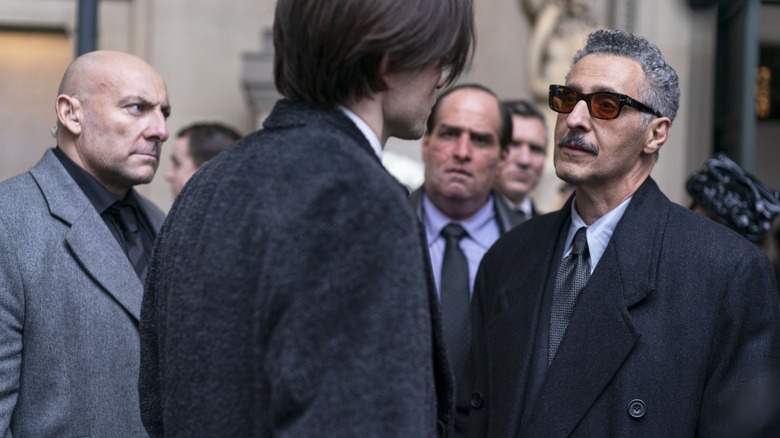How The Batman's Take On Carmine Falcone Was Inspired By Real New York History
We may receive a commission on purchases made from links.
One thing that differentiates Matt Reeves' "The Batman" from previous Batman films is the amount of focus given to Carmine Falcone, played this time around by John Turturro. Although the character makes an impact in "Batman Begins," this new version gets a lot more time to be the slimy, menacing figure he was in the comics. This Falcone has a history with Bruce's father and he tries to use that to his advantage. He's also established as Selina Kyle's father, a connection between the characters first established in the 1999 series "Dark Victory" but not yet explored on the big screen.
Whereas Nolan's film has Falcone as a similarly powerful figure in the criminal underworld of Gotham, Turturro's Falcone is powerful here in a way that feels way more personal to both Batman and Catwoman.
To further establish the character's power and influence, Reeves had his headquarters located in a loft above the Iceberg Lounge, with big windows giving him a view of the city below him. This design help to cement Falcone's influence over the city; the fact that the windows are circular makes them look, from outside the building, like eyes watching in each direction. It also gives the scenes in his office a really unique kind of lighting, as the headlights from surrounding cars are constantly shining in and out. As production designer James Chinlund put it in the newly released "The Art of The Batman" book:
"When the power is out, there are cars that are moving along, so we're getting this incredible light, and that goes back to some of those inspirations from the comics, the shafted light. We see the light from the headlights of the cars, one of the only things that's going to be illuminating this room, so you'll get these staccato wipes of light in the space, which just felt like a really cool backdrop for a fight."
'Lived like an emperor'
Chinlund explained in "The Art of the Batman" that the inspiration for this set design came from Robert Moses, "a notorious figure in the history of New York."
"He ran something called the Triborough Commission, and basically he was responsible for masterminding all these road projects throughout the city. Legend has it that his office was beneath a toll plaza in the bridge, and so as the money flowed in from the tolls it went right through a tube into his office. I always thought that was an amazing idea for this villain."
Robert Moses was described in the Pulitzer-winning biography "The Power Broker" as someone who "built an empire and lived like an emperor. He was held in fear — his dossiers could disgorge the dark secrets of anyone who opposed him." It's easy to see how he'd serve as inspiration for Falcone, especially considering how a large part of Bruce's arc in this film is him grappling with his father's part in the murder of a reporter who had dirt on the family. Bruce finds out that his father went to Falcone and asked him to scare the reporter, but Falcone instead chose to have the reporter killed. This way, he'd have something he could hold over the billionaire politician's head for the rest of his life. It's an extreme version of the kind of tactics Moses is reported to have engaged in.
Perhaps most importantly, Moses' long, crooked career sheds a light on the corruption within New York City at the time. "The Power Broker" is less of a critique of Moses himself so much as a critique of the larger system that allowed him to be so successful in the first place. Similarly, it's through Falcone's character that the sheer extent of the corruption in Gotham is explored in "The Batman." Matt Reeves' version of Gotham is so overrun with crooked cops and politicians that we could genuinely understand why Bruce's vigilante approach would seem like a good idea, and Falcone is the movie's clearest symbol of that corruption.

